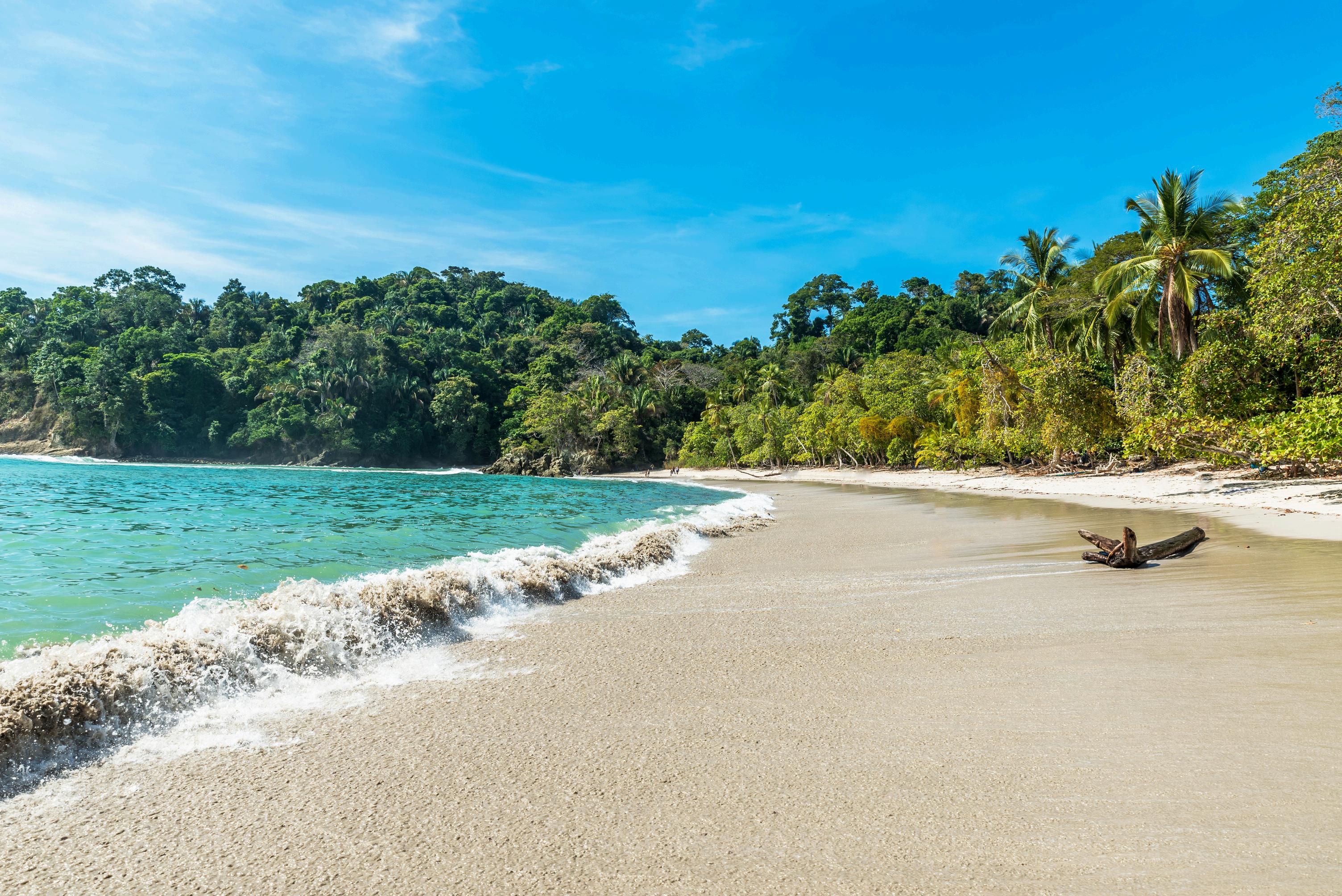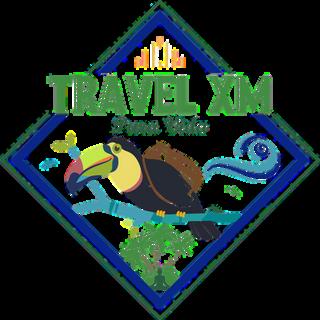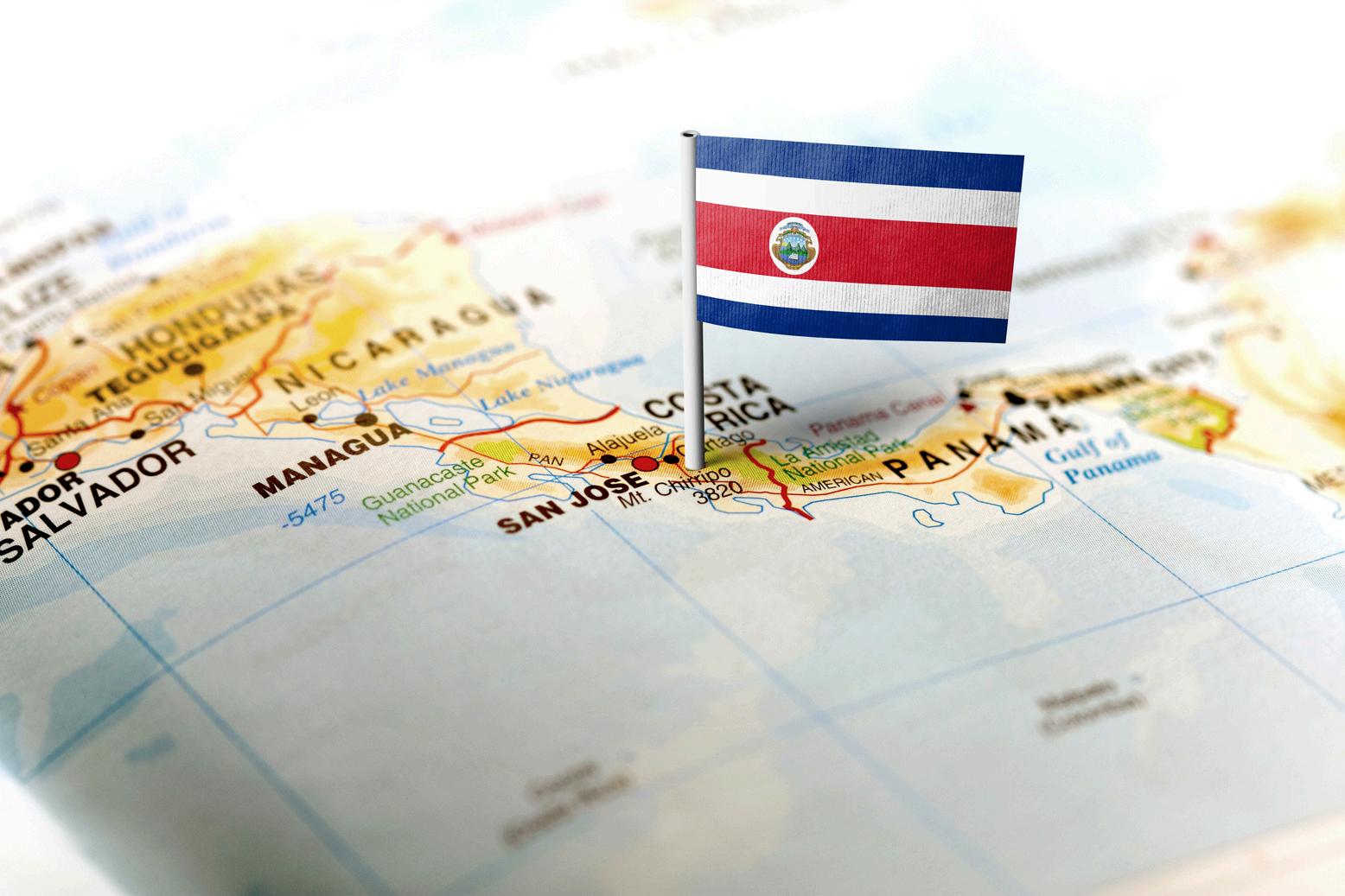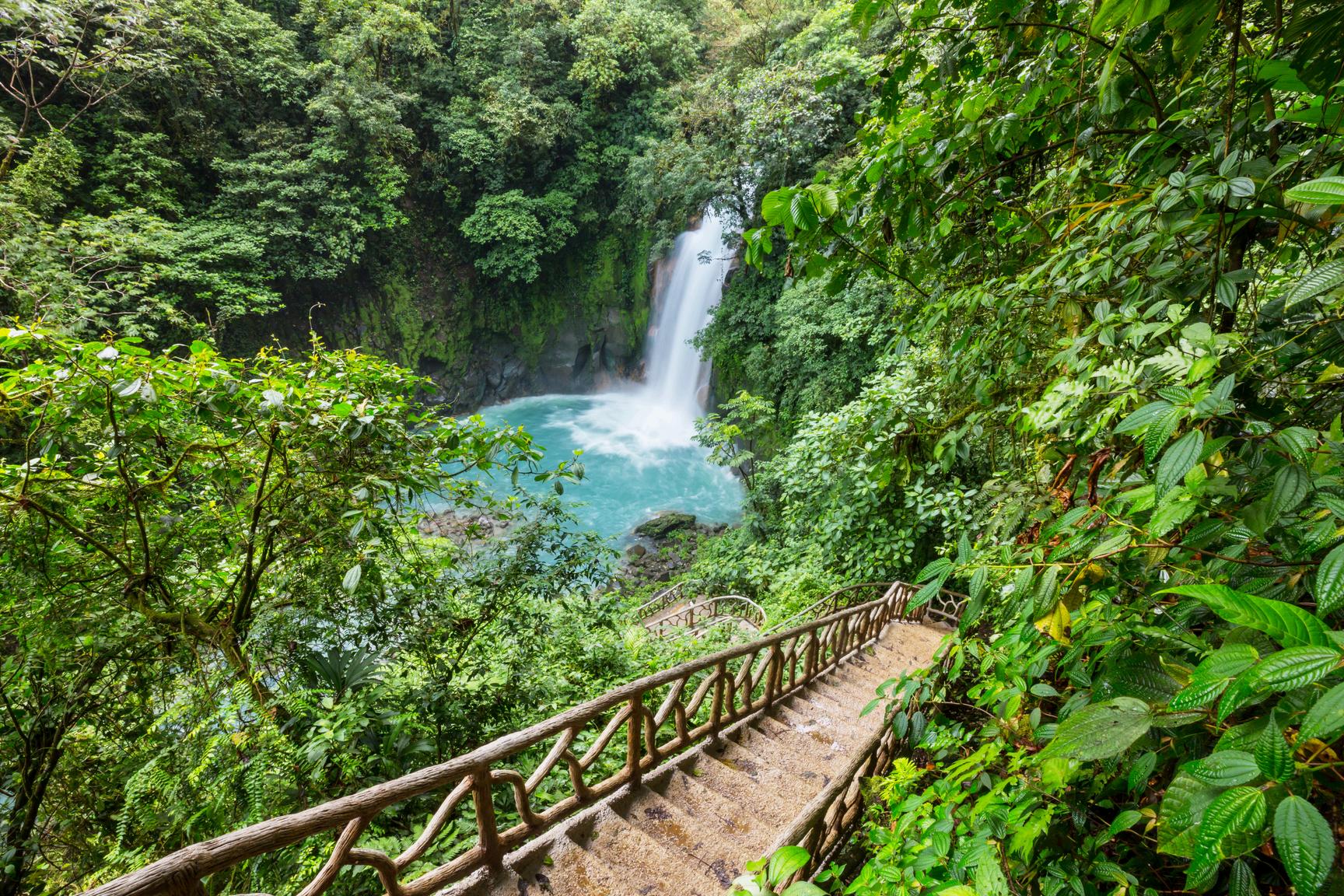CostaRica















Costa Rica, a gem nestled in Central America, is an alluring destination that captivates travelers with its unparalleled natural beauty, rich cultural heritage, and commitment to sustainability. With its diverse landscapes ranging from verdant rainforests and majestic volcanoes to pristine beaches and serene cloud forests, Costa Rica offers an extraordinary array of experiences for every type of traveler.
Costa Rica is renowned for its breathtaking natural landscapes. The country is home to over 500,000 species of plants and animals, making it one of the most biodiverse places on Earth
For adventure enthusiasts, Costa Rica is a paradise. The country offers an extensive range of outdoor activities, from exhilarating zip-lining through the treetops and white-water rafting on wild rivers to surfing world-class waves and exploring underwater reefs through snorkeling and diving


Costa Rica's history is a tapestry of indigenous cultures, Spanish colonization, and a remarkable path to modernity Here is a concise overview:
Pre-Columbian Era: Before the arrival of Europeans, Costa Rica was inhabited by various indigenous groups, such as the Chorotega, Bribri, and Cabécar. These communities had complex social structures and rich cultural traditions.
In 1502, Christopher Columbus arrived on the Caribbean coast of Costa Rica Spanish explorers and settlers began to establish colonies, though Costa Rica remained relatively sparsely populated and isolated compared to other Spanish colonies. The region was part of the Captaincy General of Guatemala within the Spanish Empire.
Independence (1821): Costa Rica, along with other Central American countries, declared independence from Spain on September 15, 1821. Initially part of the Mexican Empire, Costa Rica soon joined the United Provinces of Central America and later became a fully independent republic in 1838.
20th Century Developments: Costa Rica experienced political and social changes throughout the 20th century, including the abolition of its military in 1948 following a brief civil war This move helped establish a stable democratic government, promoting social welfare and progressive policies.
Modern Era: In recent decades, Costa Rica has been recognized for its commitment to environmental conservation, stable democracy, and high quality of life. It remains a leading example of sustainable development in Latin America.




Costa Rica is a country located in Central America, bordered by Nicaragua to the north, Panama to the southeast, the Pacific Ocean to the west, and the Caribbean Sea to the east. Its diverse geography includes:
Mountain Ranges: The Central Mountain Range runs from north to south and includes several active volcanoes, such as Arenal and Poás. These mountains contribute to the country's varied climate and ecosystems
Coastlines: Costa Rica boasts both Pacific and Caribbean coastlines, offering a variety of beaches and marine environments The Pacific coast is known for its surfing spots and bustling beach towns, while the Caribbean coast is famous for its relaxed atmosphere and rich Afro-Caribbean culture.
Rainforests and Cloud Forests: The country is home to lush rainforests, particularly in the south and the Caribbean slope. Monteverde’s cloud forest is a notable example of its unique high-altitude ecosystem, teeming with biodiversity.
Rivers and Lakes: Costa Rica features numerous rivers and lakes Lake Arenal, for example, is the largest lake in the country and provides important resources for hydroelectric power
Climate: The climate varies by region and altitude, ranging from tropical on the coast to temperate in the highlands. The country experiences two main seasons: the wet season (May to November) and the dry season (December to April)






Costa Rica is renowned for its commitment to conservation and has a robust system of national parks and protected areas Here are some notable ones:
Manuel Antonio National Park: Located on the Pacific coast, this park is famous for its stunning beaches, lush rainforest, and diverse wildlife, including sloths, monkeys, and colorful birds. Its short hiking trails lead to spectacular viewpoints and pristine sandy stretches.
Tortuguero National Park: Situated on the Caribbean coast, Tortuguero is known for its extensive canal system and as a major nesting site for green sea turtles Visitors can explore the park by boat, observing wildlife such as caimans, howler monkeys, and a variety of bird species.
Corcovado National Park: Located on the Osa Peninsula in southwestern Costa Rica, Corcovado is one of the most biodiverse places on Earth. It protects a range of ecosystems, from lowland rainforests to mangroves, and is home to jaguars, tapirs, and numerous bird species.
Monteverde Cloud Forest Reserve: This reserve is situated in the mountainous region of Monteverde and is famous for its misty, high-altitude cloud forests. It is a haven for biodiversity, including rare species like the resplendent quetzal and the endangered golden toad




Costa Rica's diverse ecosystems support an impressive array of wildlife and plant species:
Fauna: The country's rich biodiversity includes more than 500,000 species, making it one of the most biologically diverse countries per square kilometer. Notable animals include:
Sloths: Both the three-toed and the two-toed sloths are common in the rainforests
Monkeys: Howler monkeys, spider monkeys, and capuchin monkeys are frequently spotted in the forests.
Birds: Over 850 bird species are found in Costa Rica, including the vibrant toucan, the quetzal, and the harpy eagle.

Reptiles and Amphibians: The country is home to various frogs, including the poison dart frog, and a range of reptiles like iguanas and boa constrictors
Flora: Costa Rica's plant life includes:
Tropical Rainforest Plants: Diverse species of trees, orchids, and ferns thrive in the rainforest.
Cloud Forest Plants: Unique plant species adapted to the moist, cool environment, such as bromeliads and epiphytes, are found here.
Endemic Plants: Several plants are endemic to Costa Rica, including some species of orchids and the Costa Rican palm.




National Parks - Fauna and FloraBeaches and Volcanoes
Costa Rica's landscapes are marked by its beautiful beaches and dramatic volcanic activity:
Beaches: Costa Rica's coastlines offer a wide range of beaches:
Pacific Coast: Known for its large waves and surfing opportunities, with famous spots like Tamarindo, Jaco, and Santa Teresa.
Caribbean Coast: Characterized by its white sandy beaches and turquoise waters, including places like Puerto Viejo and Cahuita.
Volcanoes: The country features several active and dormant volcanoes:
Arenal Volcano: Once one of the most active volcanoes in the world, Arenal is now in a resting phase but remains a popular attraction due to its picturesque shape and surrounding hot springs
Poás Volcano: Known for its large crater lake, Poás is an accessible volcano with a visitor center and well-maintained trails



Costa Rican culture is a vibrant mix of traditions and modern influences, reflected in its festivals, cuisine, and music. These cultural elements contribute to the country’s unique charm and offer a glimpse into the diverse experiences that Costa Rica has to offer.
Costa Rican cuisine is known for its simplicity and fresh ingredients. Here are sometypicaldishesandculinarytraditions:
Gallo Pinto: A staple breakfast dish made from a mix of rice and black beans, often served with eggs, plantains, and tortillas. It’s a beloved comfort food that represents the essenceofCostaRicancuisine
Casado: A traditional meal typically served for lunch, consisting of rice, beans,meat(suchasbeef,chicken,or fish), and a variety of side dishes like salad,friedplantains,andvegetables
Tamales: Popular during festive seasons,tamalesaremadefromcorn doughstuffedwithmeats,vegetables, or cheeses, wrapped in banana leaves,andsteamed
Costa Rican music and dance are integral to the country’s cultural identity, blending indigenous, African, and Spanish influences:
Marimba: This traditional wooden percussion instrument plays a central role in Costa Rican folk music Marimba bands perform at various cultural events and festivals.
Tambito: A lively dance with African influences, performed during celebrations and festivals. It involves rhythmic drumming and energetic movements
Independence Day: Celebrated on September 15, this national holiday marks Costa Rica's independence from Spain in 1821. The day is filled with parades, traditional music, and dances Schools and communities often organize torchlight processions and patriotic performances.
Festival of Lights: Held annually in San José in December, this vibrant festival kicks off the holiday season with a grand parade featuring illuminated floats, music, and fireworks It’s a joyful celebration that draws both locals and tourists.



Costa Rica offers a diverse array of destinations, each with its own unique attractions and experiences:
Monteverde: Known for its cloud forests, Monteverde is a top destination for nature enthusiasts The Monteverde Cloud Forest Reserve offers canopy tours, hanging bridges, and night hikes to observe nocturnal wildlife.
Guanacaste: This province on the Pacific coast is renowned for its beautiful beaches and sunny weather Popular spots include Tamarindo, a lively beach town with great surfing, and Playa Flamingo, known for its pristine white sand.

Puerto Viejo: Located on the Caribbean coast, Puerto Viejo is famous for its laidback vibe, Afro-Caribbean culture, and vibrant nightlife. The nearby Cahuita National Park offers excellent snorkeling and wildlife viewing.
La Fortuna: Home to the Arenal Volcano, La Fortuna is a popular destination for adventure seekers. Visitors can enjoy hot springs, waterfall hikes, and canopy tours while taking in views of the majestic volcano.


Costa Rica is a prime destination for adventure and ecotourism, with activities catering to a wide range of interests:
Hiking and Trekking: The country’s diverse landscapes offer numerous hiking opportunities Trails in parks like Corcovado, Manuel Antonio, and Arenal provide scenic views and encounters with wildlife.
Canopy Tours: Zip-lining through the rainforest canopy is a thrilling way to experience Costa Rica’s lush landscapes. Popular locations include Monteverde and Arenal.

Rafting: Costa Rica’s rivers, such as the Pacuare and Reventazón, offer exciting white-water rafting experiences. The rapids range from beginner to expert levels.
Surfing: The country’s Pacific and Caribbean coasts are ideal for surfing, with breaks suited for all skill levels. Tamarindo, Jaco, and Santa Teresa are notable surfing destinations
Snorkeling and Diving: The country’s marine areas, such as Cahuita National Park and the Bat Islands, offer excellent snorkeling and diving opportunities, showcasing vibrant coral reefs and diverse marine life


3.PRACTICAL TIPS
To make the most of your visit to Costa Rica, here are some practical tips:
Transportation: Costa Rica has a welldeveloped network of buses, rental cars, and domestic flights. For remote areas, consider renting a 4x4 vehicle or using local shuttles The country also has a network of public buses that connect major cities and towns.
Accommodation: Options range from luxury resorts and eco-lodges to budget hostels and vacation rentals. Booking in advance is recommended, especially during peak travel seasons.
Safety: Costa Rica is generally safe for tourists, but it’s important to take standard precautions such as securing valuables, avoiding isolated areas at night, and following local advice on safety.

Health and Safety: Ensure you are up-todate with routine vaccinations. While Costa Rica has a good healthcare system, travel insurance is recommended. Be cautious of food and water hygiene to avoid stomach issues
Currency and Payments: The local currency is the Costa Rican colón (CRC). While credit and debit cards are widely accepted, it’s useful to carry some cash for small purchases and in more remote areas.
Language: Spanish is the official language, but English is commonly spoken in tourist areas Learning a few basic Spanish phrases can enhance your experience.

Education and Health Education:
Educational System: Costa Rica boasts a strong and progressive educational system
Education is compulsory and free for children up to the high school level. The country has achieved high literacy rates, with most citizens being proficient in reading and writing
Primary and Secondary Education: The education system is divided into primary (six years) and secondary (five years) education
Public schools are widespread, and there are also numerous private institutions offering diverse curricula.
Higher Education: Costa Rica is home to several reputable universities, including the University of Costa Rica (UCR), the National University (UNA), and the Costa Rica Institute of Technology (TEC) These institutions offer a range of undergraduate and graduate programs and are known for their research and academic excellence.
Healthcare System: Costa Rica provides universal healthcare to its residents through the Costa Rican Social Security Fund (CCSS or “Caja Costarricense de Seguro Social”). The system is funded by contributions from employees, employers, and the government

Healthcare Facilities: The country has a mix of public and private healthcare facilities Public hospitals and clinics offer comprehensive medical services, while private hospitals provide additional options for those who can afford them Costa Rica is also known for its medical tourism industry, attracting visitors seeking high-quality, affordable medical procedures
Preventive Care: Costa Rica places a strong emphasis on preventive care and health promotion Vaccination programs, public health campaigns, and wellness initiatives are integral parts of the healthcare system

Diversified Economy: Costa Rica has a diverse economy with key sectors including tourism, agriculture, and technology The country is known for its stable economic environment and attractive conditions for foreign investment.
Tourism: Tourism is a significant contributor to the economy, with visitors drawn to Costa Rica’s natural beauty, adventure activities, and eco-tourism opportunities The sector generates substantial revenue and employment.
Environmental Sustainability: Costa Rica is a global leader in environmental sustainability. The country has made significant investments in renewable energy, primarily hydroelectric, wind, and solar power About 99% of the country’s electricity is generated from renewable sources.
Social Values: Costa Ricans, or “Ticos,” are known for their friendly and welcoming nature The concept of “ pura vida” (pure life) reflects a positive outlook on life, emphasizing happiness and well-being.
Language: Spanish is the official language, and it is spoken throughout the country English is widely used in tourist areas and among the expatriate community

1 Books: “Costa Rica: The Essential Guide to Travel in Costa Rica” by Lonely Planet.


major cities, national parks, coastlines, and key landmarks It is essential for navigating and planning trips within Costa Rica.
Key Features to Include: Major Cities: San José (capital), Alajuela, Heredia, Cartago, and Liberia.
National Parks and Reserves: Highlight significant protected areas like Manuel Antonio, Tortuguero, Corcovado, Monteverde, and Arenal Volcano.
Beaches and Coastal Areas: Mark popular beach destinations on both the Pacific and Caribbean coasts, such as Tamarindo, Playa Flamingo, Puerto Viejo, and Cahuita
Volcanoes: Include major volcanoes like Arenal, Poás, and Irazú.
Rivers and Lakes: Show key bodies of water, including Lake Arenal and the major rivers like the Pacuare and Reventazón.
Sources for Maps: Online Maps: Google Maps and other online mapping services offer interactive and up-to-date maps
Tourist Maps: Local tourist information centers often provide detailed maps tailored for visitors
Travel Guides: Many travel guides and e-books on Costa Rica include useful maps.
2 3
4
Websites: Official Tourism Website: Visit Costa Rica.
Local Contacts: Travel Agencies TRAVELXM can offer customized tour packages and insider tips on the best places to visit
Travel Apps: Google Maps, TripAdvisor.


Costa Rica, with its lush landscapes, rich biodiversity, and vibrant culture, offers a unique and enriching experience for both visitors and residents As we wrap up our exploration of this remarkable country, it's essential to reflect on the key aspects that make Costa Rica a special destination:
Natural Beauty: Costa Rica's natural wonders are nothing short of extraordinary. From the misty cloud forests of Monteverde to the pristine beaches of Guanacaste and the awe-inspiring volcanoes of Arenal, the country's diverse ecosystems provide endless opportunities for adventure and exploration. Its commitment to environmental conservation ensures that future generations will continue to enjoy these natural treasures

Cultural Richness: The cultural heritage of Costa Rica is a vibrant blend of indigenous traditions, Spanish influences, and Afro-Caribbean elements Festivals, traditional music, and culinary delights reflect the warmth and diversity of its people. The concept of "pura vida" encapsulates the Costa Rican approach to life, emphasizing happiness, simplicity, and a positive outlook.
Sustainability and Progress: Costa Rica stands out as a leader in sustainable development and environmental stewardship. Its efforts to promote renewable energy, protect natural habitats, and support eco-tourism are exemplary The country's focus on education, healthcare, and social welfare contributes to a high quality of life and a stable, progressive society.
Welcoming Spirit: Costa Ricans, or "Ticos," are known fortheir friendliness and hospitality Visitors often leave with lasting impressions of the country's warm and welcoming atmosphere. Whether exploring bustling cities, relaxing on serene beaches, or venturing into the heart of the rainforest, travelers are likely to encounter a genuine and heartfelt reception.
A Destination for All: Whether you're seeking adventure, relaxation, cultural immersion, or a combination of these experiences, Costa Rica offers something for everyone The variety ofactivities and attractions ensures that every visitor can find their own slice of paradise.
As you plan your journey or delve deeper into the wonders of Costa Rica, remember that the country’s appeal lies not only in its stunning landscapes and rich culture but also in its commitment to preserving these attributes for future generations. Costa Rica invites you to explore, discover, and experience the essence of "pura vida."


Glossary
A glossary of key terms and phrases can be extremely helpful for readers, especially those who may be new to Costa Rican culture or the Spanish language Here are some terms that might be useful:
Pura Vida: Literally translating to "pure life," this phrase is a common Costa Rican expression used to convey a sense of happiness, well-being, and optimism. It’s often used as a greeting or farewell
Tico / Tica: Informal terms used to refer to Costa Rican people "Tico" is used for males and "tica" for females It reflects a sense of national pride and identity.
Casado: A traditional Costa Rican dish consisting of rice, beans, meat, and a variety of side dishes. It is often considered the national dish
Gallo Pinto: A staple Costa Rican breakfast dish made from a mixture of rice and black beans, typically served with eggs, plantains, and tortillas.
Finca: Spanish for “farm,” commonly used in Costa Rica to refer to rural properties or agricultural land.
Monteverde: Refers to the Monteverde Cloud Forest Reserve, a renowned ecological area known for its biodiversity and misty cloud forests
Pura Vida: This phrase is not just a saying but a lifestyle in Costa Rica It signifies living life to the fullest and enjoying the simple pleasures.
The bibliography includes sources and references used for creating the e-book. This section helps readers find additional information and verify the content provided Herearesomerecommendedsources:
1.Books:
"Costa Rica: The Essential Guide to TravelinCostaRica"byLonelyPlanet.
"The Rough Guide to Costa Rica" by RoughGuides
"Costa Rica: A Journey Through Nature" byGaryS.Harker.
2.Websites:
Visit Costa Rica: Visit Costa Rica The official tourism website with comprehensive information on travel andattractions
Costa Rica Tourism Board (ICT): Offers resourcesandtraveladviceforvisitors.



